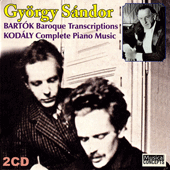-
Kodaly Galanta Dances Imslp카테고리 없음 2020. 1. 24. 00:27

Zoltan Kodaly - Free sheet music to download in PDF, MP3 & MidiAfter gaining his PhD in philosophy and linguistics, Kod? Went to Paris where he studied with Charles Widor. There he discovered and absorbed various influences, notably the music of Claude Debussy. In 1907 he moved back to Budapest and gained a professorship at the Academy of Music there. He continued his folk music-collecting expeditions through World War I without interruption.Kod? Had composed throughout this time, producing two String quartets (op.2, 1909 and op.10, 1917 respectively), Sonata for cello and piano (op.4, 1910) and Sonata for cello solo (Op.
8, 1915),1 and his Duo for violin and cello (op.7, 1914). All these works show a great originality of form and content, a very interesting blend of highly sophisticated mastery in the Western-European style of music, including classical, late-romantic, impressionistic and modernist tradition and at the other hand profound knowledge and respect for the folk music on Hungary, Slovakia, Bulgaria, Albania and other Eastern-European countries. Due to the outbreak of the First World War and subsequent major geopolitical changes in the region and partly because of the personal shyness Kod?

Jessica Leibfried Chris Johnson Director of Education Young People’s Logistics Coordinator 612-3-371-5671. BEFORE YOU LEAVE SCHOOL 1) Please give a copy of your ticket to every bus driver and group leader on the day of the concert. Dances Of Galanta sheet music - Orchestra Bells sheet music by Zoltan Kodaly: Universal Edition. Shop the World's Largest Sheet Music Selection today at Sheet Music Plus. Kodaly - Dances of Galanta Full Score - Download as PDF File (.pdf) or read online. Zoltan Kodaly's 'Galanta of Galanta' full orchestral score.
Had no major public success until 1923 when his Psalmus Hungaricus premiered at a concert to celebrate the fiftieth anniversary of the union of Buda and Pest (Bart?' S Dance Suite premiered on the same occasion.) Following this success, Kod? Travelled throughout Europe to conduct his music.Kod? Was very interested in the problems of music education, and wrote a large amount of material on music education methods as well as composing a large amount of music for children. Beginning in 1935, along with colleague Jend? He embarked on a long term project to reform music teaching in the lower and middle schools. His work resulted in the publication of several highly influential books and he had a profound impact on musical education both inside and outside his home country.
Kodaly Galanta Dances Imslp 1
Some commentators refer to his ideas as the 'Kod? Method', although this seems something of a misnomer, as he did not actually work out a comprehensive method, rather laying down a set of principles to follow in music education.
See also: Kod? Hand Signs.Portrait of Zolt?Kod? Boglarlelle Music Elementary School in Boglarlelle, HungaryHe continued to compose for professional ensembles also, with the Dances of Marossz?(1930, in versions for solo piano and for full orchestra), the Dances of Galanta (1933, for orchestra), the Peacock Variations (1939, commissioned by the Concertgebouw Orchestra to celebrate its fiftieth anniversary) and the Missa Brevis (1944, for soloists, chorus, orchestra and organ) among his better known works. The suite from his opera H? J?s (1926) also became well known, though few productions of the opera itself take place. It was first performed in Budapest and conductors such as Toscanini, Mengelberg and Furtwangler have included this piece in their repertoires.Kod? Remained in Budapest through World War II, retiring from teaching in 1942.

In 1945 he became the president of the Hungarian Arts Council, and in 1962 received the Order of the Hungarian People's Republic. His other posts included a presidency of the International Folk Music Council, and honorary presidency of the International Society for Music Education. He died in Budapest in 1967, one of the most respected and well known figures in the Hungarian arts.In 1966, the year before Kod?' S death, the Kod? Quartet, a string quartet named in Kod?' S honour, formed.His notable students include John Verrall.'
Concerto for Violin and Orchestra. Among them was the gulf between authentic folk song, usually modal, and oodaly music overlaid by popular European dance idioms spiced with flamboyant gypsy ornamentation — verbunkos music. In the second half of the composition, the rondo form is cast aside and we hear a string of dance tunes that with the exception of one slower theme gradually get faster and faster. You will regularly receive information about new scores with free downloads, current prize games and news about our composers.The verbunkos became the dominant Hungarian instrumental tradition of the koealy th century.
